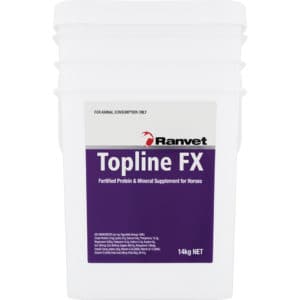What is protein & how does it build muscle in horses?
What is protein?
All life processes are dependent upon proteins as they are involved in the structure and function of all living cells. Enzymes, essential for cellular function are proteins. Hormones are either proteins or associated with them in their action. The “cement” which binds cells into tissues or organs is either wholly or partially protein. Haemoglobin and enzymes in red blood cells, which enable transfer of oxygen and carbon dioxide are proteins.
Proteins are made up of 20 amino acids in varying combinations. Amino acids are often described as the building blocks of proteins. Animals can only synthesise about half these amino acids and must therefore be supplied with the ones they cannot make. These are called essential (or indispensable) amino acids, i.e. it is essential that they be supplied in the diet. As a result of this, protein quality is largely determined by the amounts and proportions of essential amino acids making up the protein. If one essential amino acid is not present in sufficient quantity (called a limiting amino acid), then the other amino acids present above that level will be wasted. The two most important limiting amino acids for horses are Lysine and Methionine, therefore a shortage in either one of these essential amino acid makes overall protein utilisation less efficient, and the horse can become protein deficient.
Protein forms the skin, hair, muscle, connective tissue, hooves, nervous system and much of the horse’s skeleton.
How crucial is protein?
Physical strength comes primarily from the integrity of muscles, and to build muscles a high quality protein intake is essential. Diets deficient in protein result in poor performance and reduced stamina in the performance horse, failure to grow normally in the case of the developing horse and may even result in death in starvation circumstances. It is important to note that animals engaged in heavy production (i.e; gestational or lactational mares) have much higher comparative protein requirements.
How can I determine if my horse is protein deficient?
A deficiency of protein in the ration of the horse may result in one or a combination of the following deficiency symptoms;
- Depressed appetite
- Poor growth/stunted development
- Inadequate top-line and muscle wasting
- Unexplained loss of weight
- Unexpected loss of condition
- Loss of stamina/inability to maintain condition and performance level
How to build suitable topline?
During exercise, muscle fibres operate in a sequential process of expansion and contraction to allow movement of the skeletal system. The speed and strength of movement and the ability to sustain this process is determined by the level of conditioning (muscle building) which has taken place. It is important to increase exercise intensity gradually and build topline through the use of loading exercises such as controlled hill work and collected work. These forms of exercise stimulate muscle conditioning and hypertrophy (increased size and mass) to support the stresses of training more effectively. A rapid increase in exercise intensity will cause micro-tears in muscle fibres, resulting in muscular pain, stiffness, prolonged recovery time and a temporary reduction in exercise ability.
When damage to muscle fibres takes place, protein is laid down to facilitate the repair process, resulting in an increase of strength and fibre diameter in areas stimulated during exercise. However, severe damage caused by over exercising will often cause the release of inflammatory mediators, pain and a reduced potential for short-term training.
The importance of protein quality for achieving desirable topline
The ability to maintain, repair and build topline is dependent on the protein content and quality within the ration. It is important to remember that protein is a highly inefficient source of energy and should not be supplemented to the diet as an energy source. However, when trying to maintain or build topline, provision of a high quality protein source within the ration is paramount. High quality protein sources include;
- Topline FX
- Sunflower seeds
- Soybean meal
- Tickbeans
- Lupins
The addition of 300-600g/day of Ranvet’s Topline FX is a concentrated protein supplement which contains added amino acids; lysine, methionine and arginine to promote fast and efficient building of topline. Please note that for maximum results it is very important to feed Topline FX every day in a balanced ration as protein is not stored in the body.
Ranvet’s Topline FX is specifically designed for building topline. It is formulated with low starch and sugar levels so it is safe for horses with laminitis and metabolic disorders.
Experts in Equine Nutrition
Every product in the Ranvet range has been developed to meet a horse’s most specific need at any given time, be it in a training environment or on a breeding farm. Having pioneered the formulation of specific medications and dietary supplements for horses, the company is now recognised as a leader in the areas of equine health and nutrition.

